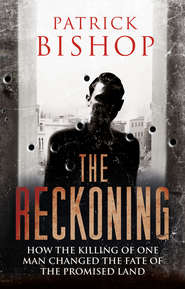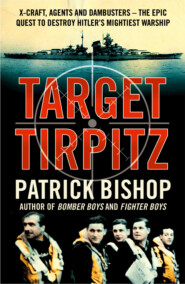По всем вопросам обращайтесь на: info@litportal.ru
(©) 2003-2024.
✖
3 Para
Настройки чтения
Размер шрифта
Высота строк
Поля
Butler was unhappy with the command arrangements. In an attempt to overcome the difficulties of the set-up, a subordinate layer of command was inserted into the hierarchy. Colonel Charlie Knaggs, who had recently commanded the Irish Guards, was put in charge of the Helmand Task Force, and was therefore in nominal tactical command of every British soldier in the province. This appointment only added to the confusion. Finally, the Americans engaged in the counter-terrorism campaign in Afghanistan also had a formal interest in British operations. They were commanded by Major General Ben Freakley, a God-fearing, fighting soldier who rejected any idea of compromise with the Taliban and came to distrust the British approach.
Thus, for the first four months of the tour, Tootal had to answer to the Canadians, the Americans and also to Charlie Knaggs. Ed Butler was on hand to advise and listen to his concerns, but he operated at a tangent to the decision-making process. One of David Richards’s first acts on taking over full command of ISAF in August was to place Butler below Fraser and give him tactical responsibility for British forces under Canadian command. It seemed obvious to many that this was what should have been done at the outset. The structure was extraordinarily cumbersome and guaranteed to generate fuzziness and ambiguity. This was before account was taken of Afghanistan’s swirling political complexities. These difficulties would play an important part in the Para battle group’s destiny in Helmand.
Despite the limitations on their hearts-and-minds activities, the Paras did what they could. On 1 June, to mark the United Nations’ National Children’s Day, ‘C’ Company, which had just taken over from ‘A’ Company in Gereshk, went to a local school and, with the approval of local elders, suggested a game of football. They handed out kit and, according to their OC, Major Paul Blair, were surprised when ‘less than ten minutes later the local team ran out wearing the strip. A lot of them were playing in bare feet but we were royally thrashed.’
Even at this stage, Blair believed the outreach mission could work.
Little things amazed me – the discipline of the children when we were playing football – one word from the teacher and they sat cross-legged around the pitch. Lots of the older students came out and said, ‘This is amazing’ because we had just dished out several hundred school packs with paper, pens, exercise books and so on. I thought, if we have got this amount of interest and as a lot of the elders involved with the school are on side, there is definitely hope.
Blair’s first thought was that ‘we must look after the kids. The kids are gagging for education and for extra supplies so I thought, we have delivered on that one.’ But fear of the Taliban loomed over everything. The teachers told Blair how they received letters threatening them with death if they taught little girls. He nonetheless felt that ‘if we can sort out security and some supplies we can at least nail the education bit. Gereshk, I thought, was a success waiting to happen.’
The arrival of a new CIMIC officer in the middle of May seemed an encouraging development. Captain Emma Couper had been on the point of leaving the army to go to a job in the UN when the abrupt return of her predecessor created a vacancy. ‘As a female officer, to get an opportunity to go out to the headquarters of a Parachute Regiment battalion comes along once in a lifetime,’ she said, ‘and although all my friends thought I was nuts, when I said, “Well, would you turn it down?” they all said, “No.”’
Most of the women attached to the Paras were medics or administrators. Couper went into the army after studying English literature at Manchester University, where she joined the Officer Training Corps, mainly for the sport and outdoor adventure it offered – she played rugby and went climbing. Both her parents had been in the army, though they were out by the time she was born. For her first year at university, she had no intention of following them. Then in the second year, after doing some army attachments, ‘all the pieces started to fit in. I really liked those I worked with. I didn’t want a nine-to-five job. I wanted to travel and I wanted to work with people.’ To her OTC buddies it seemed a natural progression. Most of them followed suit. Her other friends ‘had different values. Maybe they were more materialistic. They wanted to have more control over their lives.’ Her work in CIMIC had taken her to Bosnia in the nineties, Afghanistan in 2002 and most recently Iraq, where she liaised between the divisional headquarters and the local population.
She arrived in Bastion on 10 May and met Stuart Tootal, who thought she seemed ‘enthusiastic, bright and experienced’. They agreed on the need for projects that not only delivered benefits but also put money in local pockets, such as digging new roadside drains.
Once in Gereshk she went out on patrols, ‘establishing relationships with the key leaders, getting them in for meetings and starting to build a database of information that we could push up to Brigade and give them an idea of what was going on on the ground. The basics of water, electricity, power and all the things which potentially the larger agencies from the US and UN might in the long term get involved with’.
But all this depended on improving security, and it was clear to her that there was a very long way to go before real changes could be made. The police force were corrupt and malleable. Some of the twenty-two checkpoints set up at the entrances to the town were ostensibly run by the police but in fact subcontracted to gunmen. The police sat inside their posts while their hirelings extorted money from everyone passing through.
Attempts to instil some training and sense of duty had been discouraging. The course was four or five weeks long and was held in Kandahar, 80 miles away. The men were unhappy at being away from home and tended to run away after a few days.
Even with resources available, the Paras’ experience so far told them that sorting out Gereshk would be a hard and tricky task. The time was coming, though, when all their manpower and assets would be needed for a tougher job.
5 (#u0c01a37c-2577-507e-9b05-956815bb76c6)
The Road to Sangin (#u0c01a37c-2577-507e-9b05-956815bb76c6)
By the second week in May, all the elements of 3 Para had arrived in Bastion. Tootal felt he now had a battle group to command, although he was still waiting for some of his gunners and engineers and all of the HCR’s D Squadron. The engineers in place were making constant improvements to the camp. Bastion was expanding all the time. No one could complain about the conditions now. There were rows of air-conditioned tents connected by duckboard runways. Soldiers could get their laundry done, eat decent food and call home on the welfare phones. Mobile phones had to be surrendered on arrival, for ‘operational security’ reasons. There was also a high risk that homesick Toms would run up crippling bills calling their loved ones in the UK.
At night you could sit outside a Western-style coffee shop, enjoying the relative coolness, drinking Cokes and smoking. Bastion was a cigarette-friendly zone, with men and women sparking up with abandon. Booze was another matter. The camp, like every other military facility in the area, was dry.
Tootal thought the time was now right to start delivering the ‘Sangin effect’. This was his plan to expand the British presence northwards into the towns and villages that ran along Helmand’s river valleys. It would deliver the British government’s wish to ‘deny terrorists an ungoverned space’. Discussions went on throughout April between the battle group and the Canadian forces in neighbouring Kandahar province as to how this could be done.
The intention was given impetus by the new governor of Helmand, Engineer Mohammed Daoud. The appointment of Daoud appeared to be proof of the central government’s resolve to bring order to the province. He was a ‘technocrat’ from the east of Afghanistan who had headed an NGO distributing wheat to the poor before the arrival of the Taliban. He was forced to flee over the Pakistan border to Quetta, where he met and became close to Hamid Karzai. His reputation contrasted favourably with that of his predecessor. Sher Mohammed Akhunzada had been forced out of office by pressure from NATO. Suspicions that he was a player in the drugs trade seemed confirmed, early in 2006, when counter-narcotics agents raided his offices and discovered nearly 9 tons of raw opium. His own men had seized the dope, he explained, and he was just on the point of handing it in. He was given the consolation prize of a seat in the upper house of the national assembly. To placate the powerful Akhunzada family, his brother, Amir, was put in as Daoud’s deputy.
Daoud was considered to be as honest as it was possible to be in the treacherous and venal world of Afghan politics. He was a Pashtun, like most people in Helmand, but had no strong tribal affiliations. He was close to President Karzai and was identified with the forces of progress and modernity. ‘He was the right man for the job,’ said Ed Butler. ‘He was a developer. He was a reconstructor. He could think long term.’ He was also very insistent that the British were there to support him and that he had a right to call on their resources to shore up his authority wherever it was challenged.
Daoud had formed the unfortunate belief that the battle group was much more powerful than it in fact was. He assumed that the great majority of the 3,300 soldiers arriving in Helmand would be ‘bayonets’ and that, in the words of a senior British officer, ‘there were going to be three thousand Paras running around all over the place’. The number of fighting soldiers in the battle group, including the Royal Irish, the Gurkhas and, later, the Fusiliers, was less than a third of the overall number. The others were there to support them. Try as they might, British commanders never succeeded in managing Daoud’s extravagant expectations.
Daoud was also frustrated by the battle group’s late arrival. The deployment had been delayed while the Dutch prevaricated over their contribution to the NATO effort in southern Afghanistan. As a result, said Daoud, there was a ‘security gap’ in Helmand, which the Taliban were now exploiting energetically. Encouraged by the security vacuum, they had been arriving in large numbers from exile in Pakistan and were urging local leaders to join them in a holy war. Four out of the twelve district police chiefs had been killed in the six months before the Paras arrived. In the spring of 2006, the outlying northern district of Baghran fell under insurgent control.
The British plan was to secure the Triangle, then gradually extend their presence northwards up the heavily populated Helmand river valley as conditions and resources allowed. The obvious place from which to begin delivering the ‘Sangin effect’ was a bleak desert camp, a few miles south of Sangin town, called FOB Robinson, which had been built by the Americans. It was easily defended and well placed to disrupt the insurgents’ movements up and down the valley.
The possibility of putting a British company in there had been discussed. But Tootal was wary of placing his men in a fixed location where half their energies would go into defending themselves. His preference was to man the base with Afghan National Army troops who had passed through training courses that, in theory at least, had turned them into decent soldiers. They then received further instruction from British OMLTs (Operational Mentoring Liaison Teams) provided by soldiers from 7 RHA. The CO of 7 RHA, Lieutenant Colonel David Hammond, was happy to put an Afghan battalion, under the control of his OMLTs, into Robinson.
That would leave a Para company free to patrol the area, supporting the ANA and carrying out their own operations, engaging with the local people and generating a climate of security. They would spread the message about development and prepare the ground for the PRT, but also fight the Taliban where they found them.
This arrangement would be easier to sustain than a fixed presence. The force’s movements would be unpredictable and, it was hoped, keep the enemy off balance. It required fewer men than the labour-intensive business of garrisoning a fixed base. Above all, the risk of getting bogged down was minimised.
Before the operation could be launched, however, the Taliban seized the initiative. On 18 May, gunmen launched a fierce attack on the district centre in Musa Qaleh, a small but symbolically and strategically important town in northern Helmand. About twenty members of the Afghan National Police (ANP) were killed. Musa Qaleh was 60 miles south of Baghran, which was already in insurgent hands. The attack suggested that the Taliban were now set on a campaign to seize the towns of the north, and use them as a springboard for the conquest of the whole area.
The operation was intended as more than just a challenge to the Afghan government. Mohammed Hanif, a spokesman for the elusive Taliban leader Mullah Omar, boasted to The Times: ‘We are here to destroy the British. We will hunt and kill them. We will not let them go back to England and say that they have defeated the Afghans.’ It was telling that he couched the fight in nationalist terms. For propaganda purposes, the Taliban presented themselves as patriots rather than Islamic warriors. Hanif’s claim that ‘the British don’t have the capacity to fight us face to face’ suggested a degree of confidence that the new arrivals lacked the resources to challenge the Taliban head-on.
Soon after he spoke, the Taliban had an indirect encounter with British troops. The Pathfinders, 16 Air Assault Brigade’s elite reconnaissance unit, had been in the Musa Qaleh area at the time of the attack, scoping out possible landing sights. They were ordered to go and give what help they could to the beleaguered policemen. They arrived in darkness as the battle was dying out. It had lasted eight hours, but eventually the Taliban had pulled back. The next morning the ANP, bolstered by the deputy governor, Amir Akhunzada, and his personal militia, who had arrived from the south, piled into pick-up trucks and set off for Baghran, where the attackers had apparently retreated. The thirty-strong Pathfinder force followed in 2.5-ton Pinzgauer troop carriers and armoured Land Rovers. As they approached, they announced their arrival with a show of force. A coalition aircraft dropped a 2,000lb bomb on a hillside near the town. This prompted the Taliban to flee. The ANP then went into town for a shura with the elders.
The Taliban had not given up, however. Intelligence revealed that they had prepared five bombs along the convoy’s return route. A suicide bomber was also standing by. The convoy avoided these traps but was still caught in an ambush that left two of the Afghan police dead and several wounded. The Pathfinders’ sergeant major, Andy Newell, was impressed by the ANP’s determination. ‘They weren’t shy of getting amongst it,’ he said. ‘One of them was shot through the calf and one through the shoulder and after they were patched up they wanted to get straight back to the fighting which I thought was quite hard of them.’ He had also had a chance to see the Taliban close up. ‘They put up a good fight,’ he said. ‘They obviously had some tactical awareness and knew how to use the country.’ The clash ended when the Pathfinders called in an air strike by American A-10 Thunderbolts. After the Afghan casualties had been evacuated by helicopter the convoy carried on back to Musa Qaleh with no further trouble from the Taliban.
The poppy-harvest lull was definitely over. On 20 May, a four-vehicle convoy carrying Afghan soldiers, their American trainers and French troops was attacked on Route 611, which connected the important towns of Kajaki and Sangin. Initial reports indicated that up to fifteen ANA soldiers and two Frenchmen had been killed. The convoy eventually limped into FOB Robinson and a Chinook with a medical Immediate Response Team (IRT) on board was flown up to Bastion to bring back the casualties.
A number of Afghan soldiers were thought to be stranded somewhere along the route, at the mercy of the Taliban. Tootal was asked to send a force to secure the area and rescue the remaining men. It was a job for his ‘Ops One’ company, who were on permanent short notice to jump off on a mission. It was a rotating task and at the time ‘A’ Company were in the role. They set off in two Chinooks, protected by Apache attack helicopters, which were going into operational service with British troops for the first time. Finding the remnants of the convoy, if any, was going to be difficult. The French survivors, who were badly shaken by their ordeal, gave different grid locations for where the attack had taken place.
In fact there had been several attacks along a long stretch of road and there was no obvious place to put down. Looking down from the Chinook as it scudded at 60 feet over the valley floor, it seemed to Will Pike, the OC of ‘A’ Company, that the rescue plan was ‘enormously difficult and the risk threshold was high’. The road ran along the Helmand river. On either side was a swath of irrigated land, about a mile wide, of orchards, small fields and enclosures, criss-crossed by irrigation ditches. ‘It was all very flat, very, very difficult country to operate in,’ he said. ‘It’s very good for them, but hard for us to get in there in any secure way, or be able to surprise them. It’s a maze and you are facing a threat from three hundred and sixty degrees.’ They carried on a fruitless search until low fuel forced them back to Bastion.
The following day, at first light, they set off again. This time they found three of the four trucks in the convoy. Two were burned out. An Apache fired a Hellfire missile into the last one to destroy any sensitive equipment that might remain.
There was no sign of bodies, but the following day local people handed over the corpses of the two dead Frenchmen and the nine missing Afghans to the troops at FOB Robinson.
Afterwards, the story of what had happened became clearer. A first attempt to drive south had been made on 19 May. Trucks carrying ANA troops, an American team who was mentoring them and the French forces had set off from Kajaki, near the hydroelectric dam that generated electricity for the province, for FOB Robinson and soon came under fire. Two vehicles were lost but no one was hurt. The convoy turned round and tried again the following day. The plan was to take the main highway for the first leg of the route then branch off east into the desert to avoid contact with the locals. Some vehicles appeared to have missed their turning, blinded by the clouds of dust thrown up by the trucks ahead of them. The Taliban had been warned of their approach and proceeded to shoot at them along a 6-mile stretch of road.
When the incident was analysed it revealed some disturbing realities. It underlined the fact that any vehicles moving along the roads of Helmand were liable to attack. The battle group was already aware of the risks from IEDs. But this was a full-on ambush. It made even clearer the value of helicopters over convoys when inserting large groups of men or carrying out resupplies. Local people appeared to have joined enthusiastically in the Taliban attack. According to Pike, the survivors reported that ‘everyone was coming out of their houses and having a go – quite why, who knows – but the valley in that area kicked off’.
The search-and-recovery mission had used up precious helicopter hours. This meant a further delay in establishing the ‘Sangin effect’. As preparations resumed, another emergency blew up, requiring another diversion from the programme. A panicky message from the governor claimed that the town of Now Zad, about 60 miles north of his seat in Lashkar Gah, was in imminent danger of falling to the Taliban. It seemed the Taliban had not been deterred by the setback at Musa Qaleh on 18 May. Daoud’s office claimed that there had been several clashes and the police station in the centre of town had come under fire. ‘B’ Company was tasked to fly in and stiffen the meagre resistance that was all the contingent of ANP who were in the town were expected to be able to put up.
The laconic Giles Timms set off with about half his men. They were pleased to be doing something definite at last. The reports suggested that they would meet strong resistance from the Taliban on arrival. When they landed in Now Zad on 22 May, everything was calm. The smiling chief of police was there to escort them in. At the police station there was little evidence of an epic battle. ‘There was a reasonable amount of brass and empty cartridge cases lying around,’ said Timms. ‘But there was no real evidence that Taliban had tried to make a concerted effort to take the place.’
Now Zad seemed to be dealing with the crisis admirably. It was ‘a bustling little market town. Not every single shopfront was open for business but maybe two-thirds were.’ They undertook an initial vehicle patrol through town. ‘We got some funny looks, some scowls from people. But we didn’t get taken on. It was just like a normal market town and still was when we left.’
‘B’ Company stayed for twelve days. They got to work building up the defences of the police station, which sat on the main street, refreshing themselves with Zam Zam, a sickly, strangely addictive soft orange drink. They were starting more or less from scratch. The existing fortifications amounted to no more than a few rice sacks filled with dirt. The police contingent had been in the habit of standing at their posts for only half an hour each evening before retiring to smoke dope. They were all from elsewhere in the province, Lashkar Gah and Gereshk. Their wages were poor and they often went unpaid. Many failed to return after going off on leave. ‘They were pretty much a joke really,’ said Timms. ‘The moment we arrived they said, “We are glad you are here, we can sleep now,” and took no further part in defending their district centre.’
Corporal Chris Prosser of Support Company, who went with Timms’s men, felt some sympathy for them. They were, at least, ‘trying to do something for their own country’. The Paras built six sangars. They put Afghan policemen alongside them on the front gate so the people of the town could see that this was a joint effort. Despite the apparent normality, there was an undercurrent of sinister activity in the town. Intelligence reports warned that the Taliban were watching the new arrivals. ‘They were basically dicking us,’ said Prosser. ‘Trying to work out the layouts, how many people we had, what sort of weapons, basically the general set-up in Now Zad.’
One night there was a report that an attack was imminent and the garrison was ordered to stand to. But nothing developed, and on 2 June the Paras handed over to a small force from ‘D’ Company of the 2nd Battalion, The Royal Gurkha Rifles. Now Zad was to turn out to be a much hotter assignment than the Gurkhas’ original task of protecting Camp Bastion. When ‘B’ Company returned later that summer, the place was unrecognisable. ‘It was a complete war zone,’ said Timms. ‘Nobody was there any more. The shops were shut. A lot of the buildings had been demolished by air strikes.’
By answering the Afghan government’s distress signal, the British were now committed to the defence of Now Zad. Tootal’s intention was to support the Afghan forces rather than to do their job for them. The day after ‘B’ Company’s deployment, despite the established risk of ambush, an enormous seventy-six-vehicle convoy was put together to deploy a fresh company of ANA soldiers to FOB Robinson near Sangin and take out those who were there. It was led by the CO of 7 RHA and boss of the OMLTs, David Hammond.
The job of screening the convoy along the 70-mile route from Bastion was given to Mark Swann and Patrols Platoon. ‘It was quite a tricky task because the vehicles kept getting stuck and it took twenty-odd hours to get up there,’ he said. When they finally arrived at FOB Robinson, Swann was handed another task. The Canadians ordered Colonel Hammond to press on the extra few miles to Sangin town itself. Once again, the Afghan government was claiming that disaster was imminent. The district centre, the administrative compound that was the symbol of its flimsy authority, was supposed to be under siege.
Hammond asked Swann to carry out an old-fashioned recce, probing forward to establish whether the Taliban were present, and if so, where exactly they were. Effectively, this meant driving around until they were shot at. After the long journey chaperoning the lumbering convoy, Patrols Platoon were exhausted. ‘My boys were absolutely chinned at this point,’ said Swann, ‘but we had to do it.’ The platoon was mounted in WMIKs, modified Land Rovers. The acronym stood for Weapons Mount Installation Kit, a reference to the rig that allowed a heavy Browning .50-calibre machine gun to be bolted on to the back. The man on the gun could swivel the weapon through 360 degrees and lay down a devastating stream of fire that could rip up anything short of a tank at a range of 1,300 yards. The firepower was further boosted by a 7.62mm GPMG (General Purpose Machine Gun), which was operated by the vehicle commander from the passenger seat. The Rover’s 4.2-litre engine made it fast and powerful and its manoeuvrability was impressive if it was not too heavily laden. The WMIK looked like the descendant of the Vickers gun-toting jeeps driven by the Long Range Desert Group which operated in North Africa and was the precursor of the SAS. Swann and his men saw themselves as belonging to the same tradition.
It was the middle of the night when Patrols got their orders. The cover of darkness would be welcome. But it also increased the risk of running into one of the unmarked minefields left behind by the Soviet army. It was wiser to wait for first light, and the platoon took the very welcome opportunity to get their heads down for a few hours.
As they set off at dawn, intelligence warned that the Taliban were preparing an ambush. Swann altered course and set off on a dogleg, diverting from the straight route to town. They arrived at Sangin District Centre unharmed and called Lieutenant Colonel Hammond and the Afghans, telling them to follow the route they had taken. Swann had been impressed by the incident. He said later: ‘This was the point when I thought that this was not going to just be a few stray rounds being fired at me by some young lad trying to prove something. These people are organised.’
Hammond and the Afghans occupied the district centre and toured the police checkpoints. The local security forces denied that they were facing any serious threat from the insurgents. That did not mean that the Taliban were not there. The atmosphere seemed tense to Swann as he drove around Sangin. ‘People ran away when we approached. Through our optics we could see people in the distance getting down into what could only be described as firing positions. We couldn’t see the weapons so we didn’t engage … you saw people prowling.’
One of their Pinzgauer carriers broke down. The edgy atmosphere persuaded Swann to order his men to strip it and rig it with explosives. ‘We thought if we are attacked now we are going to have to leave this vehicle and we can’t leave it to them.’ These were the sorts of procedures associated with war fighting. At dusk a Chinook flew in to lift the ‘Pinz’ out.











